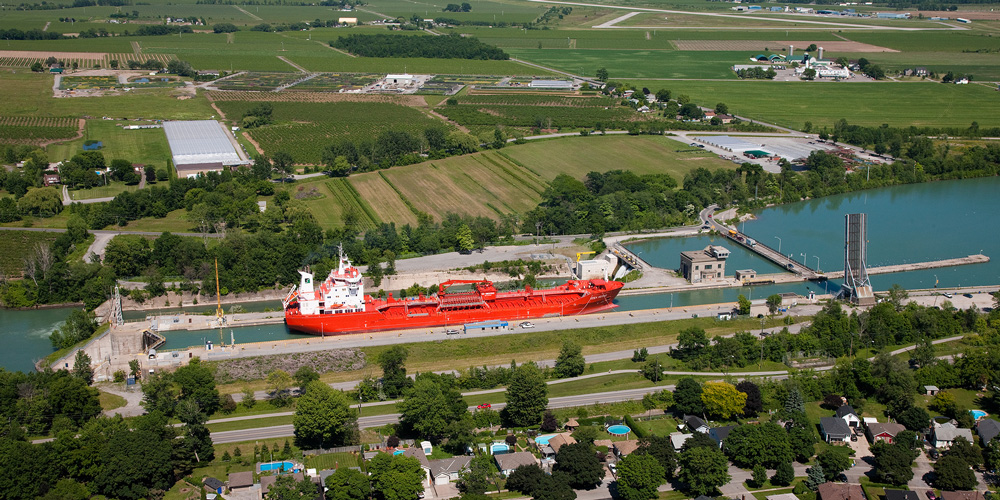Lower Fees Bring New Cargo to Seaway
July 19, 2005
Cornwall, July 19, 2005 — Collaboration with Transport Canada to encourage short-sea shipping by reducing lockage fees for smaller vessels and new cargo on the Welland Canal is paying off for the Seaway. “By the end of June,” reports Dick Corfe, President and CEO of The St. Lawrence Seaway Management Corporation, “we had already logged 81,581 tonnes of new cargo, generating over $200,000 in revenue.”
The three major new commodities by tonnage are raw sugar, aluminum and calcium ammonium nitrates, but the cargoes are diverse and include other chemicals, feed pellets, brine and machine parts. About half the new cargo transits are short-haul Seaway/Great Lakes traffic, while the rest originate as far afield as Denmark, Norway, Brazil and Houston.
“It’s encouraging to see the movement to short-sea shipping beginning to take hold, says Corfe. “This long-established means of cargo transport in Europe is a logical option in the Seaway/Great Lakes context as it alleviates highway congestion and reduces GHG emissions. There’s one shipping company in particular that seems to be establishing a niche for itself in this market, accounting for more than a third of the new cargo tonnage.”
Despite the recently resolved labour disputes in the iron ore industry that slowed traffic in the first quarter, Seaway traffic statistics remain very close to 2004 year-to-date figures, thanks to increased steel movements and the new cargo initiative. Traffic is expected to grow steadily over the rest of the year, now that iron ore is moving again at full capacity.
While part of the credit for the invigorated Seaway goes to healthy U.S. and Canadian economies, Corfe also points to new marketing strategies as a contributing factor. “We’re concentrating on cargo-focused initiatives this year,” he comments, “showing how we can add value in terms of cost reduction, reliability, and available capacity. We’re also building on the significantly higher profile that marine transportation is beginning to achieve, thanks to the concerted work of the marine industry and growing government interest.”
Among the initiatives now in progress, Corfe mentioned a series of cargo workshops that are bringing shippers of a variety of growth cargoes together with ship operators, ports and terminal handlers to discuss modal shifts to marine. “We’ve had two well-attended workshops so far – on steel in Hamilton, and on auto parts in Detroit. The next will be a grain and forest products workshop in Duluth on August 19. They’ve been a great source of ideas for the trade and for us on more widespread and efficient use of the waterway.”






